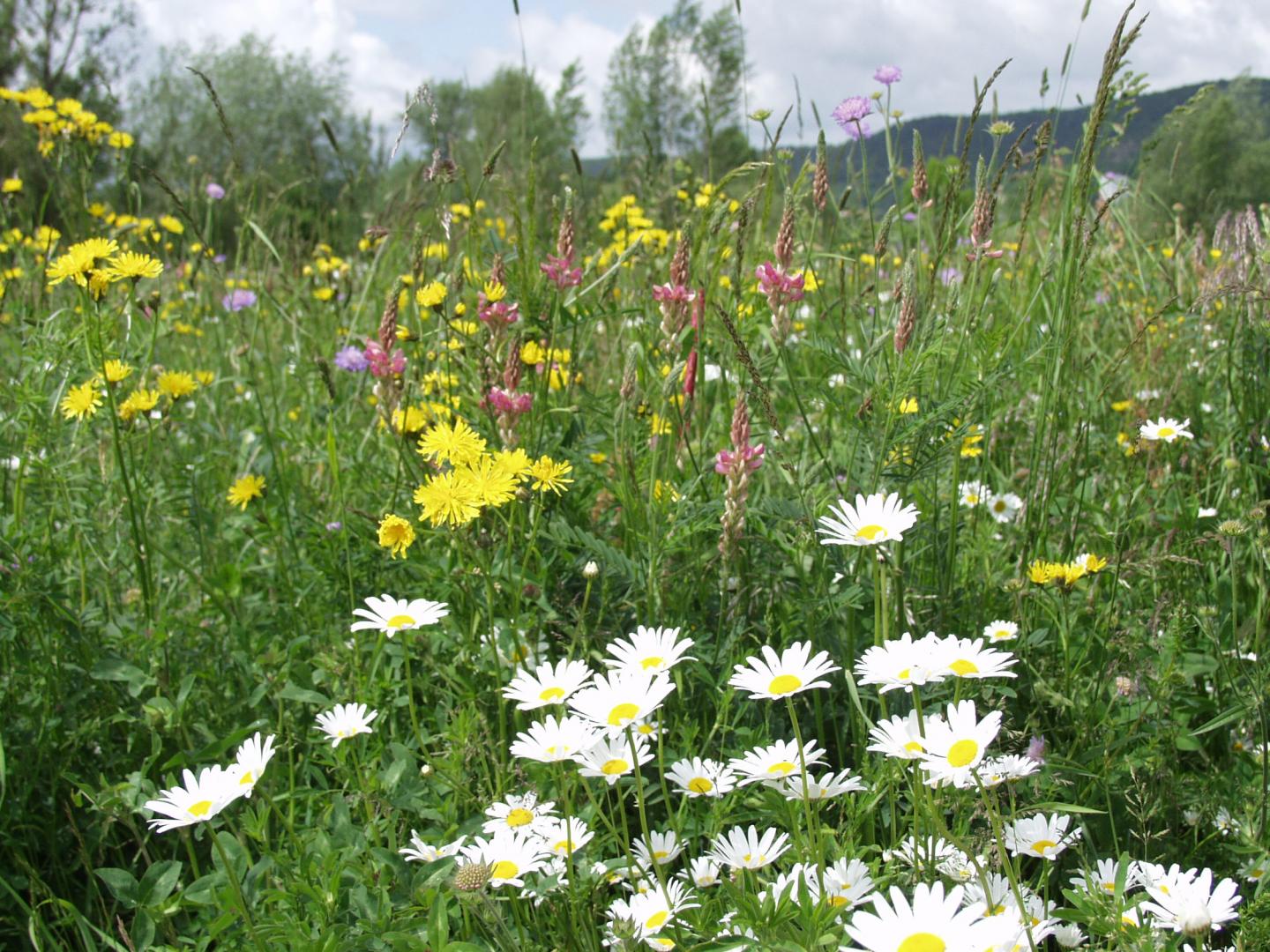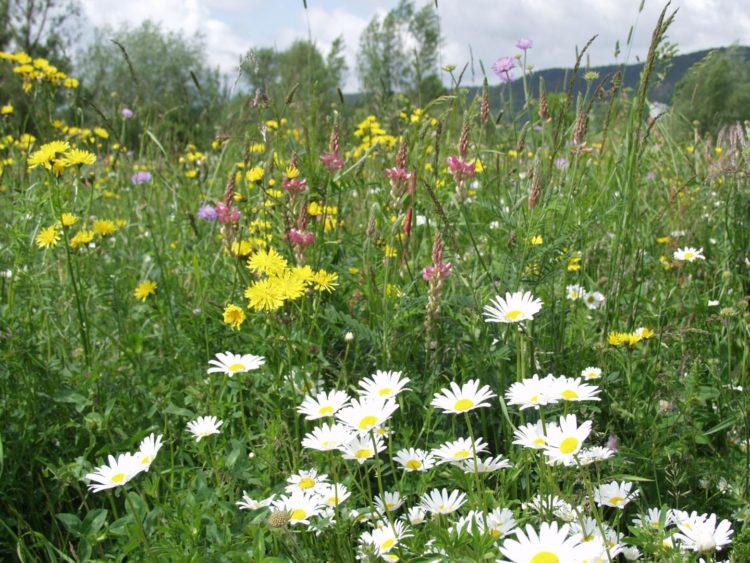Biodiversity increases the efficiency of energy use in grasslands

Credit: Alexandra Weigelt
For the first time, they did not just investigate one feeding type such as herbivores but the integrated feeding relationships across an entire ecosystem. Previous research examining the effects of biodiversity on the functioning of ecosystems focused mainly on single feeding levels (trophic levels) or simplified food chains.
“We have analyzed an entire feeding network – in other words, multitrophic interactions – above- and belowground. This is indispensable for understanding the effects resulting from global species extinction,” explained Dr. Sebastian T. Meyer, a researcher at the Chair for Terrestrial Ecology at the Technical University of Munich (TUM) and lead author of the study.
A network of energy
An aboveground food chain could extend from grasses to grasshoppers and on to spiders, for example. The research group examined how much energy flows into the system, how much remains in the system – so how much biomass is present in the system – and eventually, how much energy is leaving the system. The main insight: The entire ecosystem’s efficiency rises across all feeding levels when plant diversity increases.
“Seeing positive effects on one level does not imply that there cannot be simultaneous positive effects on other feeding levels,” said Dr. Meyer. When a grasshopper feeds on grasses until it is saturated, this does not necessarily result in negative effects on the plant level – with a high level of biodiversity, the system keeps itself in a balance.
Unique database from a grassland biodiversity experiment
The group worked with data gathered through the Jena Experiment, a large-scale grassland biodiversity experiment that has been running since 2002. The research environment provided by the experiment is unique in the world and allow for the synthesis of large amounts of data.
For each of the 80 plots of the Jena Experiment, the researchers assembled trophic network models of the grassland ecosystem. These contain the standing biomass on every feeding level and the flow of energy through feeding interactions between the trophic levels. In addition to plants, the study also covers herbivores, carnivores, omnivores, soil microbes, dead organic material aboveground and in the soil and decomposers that feed on these sources of organic matter.
More efficient energy use in ecosystems with higher plant diversity
“The study shows that higher plant diversity leads to more energy stored, greater energy flow and higher energy-use efficiency in the entire trophic network, therefore across all trophic levels,” explained Dr. Oksana Buzhdygan from Freie Universitaet Berlin, another lead author of the study.
Ecosystems with 60 plant species contained, on average, twice the amount of standing biomass in comparison to plant monocultures, which means that the total amount of resources used and recovered by plant and animal community rose with an increase in plant diversity.
Biodiversity as insurance against environmental fluctuations
“An enhanced ecosystem functionality on all levels can contribute to an increased insurance effect of biodiversity on ecosystem functions when environmental fluctuations occur; it also enhances the system’s robustness in case of perturbations,” Prof. Jana Petermann from the University of Salzburg concluded. She is the senior author of the study.
This research paper highlights the importance of biodiversity for functions in and services provided by ecosystems. For instance, agricultural land use that aims at yielding a wide range of goods and services should maintain high plant diversity, for example by planting mixed crops, in order to avoid losing ecosystem resources.
###
Further information:
In the so-called “Jena Experiment” (http://www.
The Chair of Professor Wolfgang Weisser is part of the Hans-Eisenmann-Forum (HEF) for Agricultural Sciences, a Central Institute of TUM.
Media Contact
Dr. Sebastian T. Meyer
[email protected]
49-816-171-4219
Original Source
https:/
Related Journal Article
http://dx.





